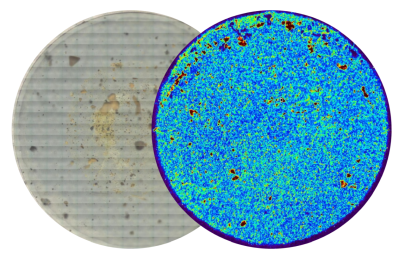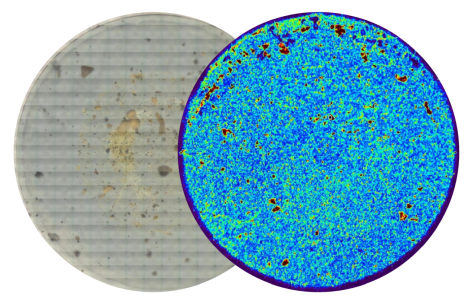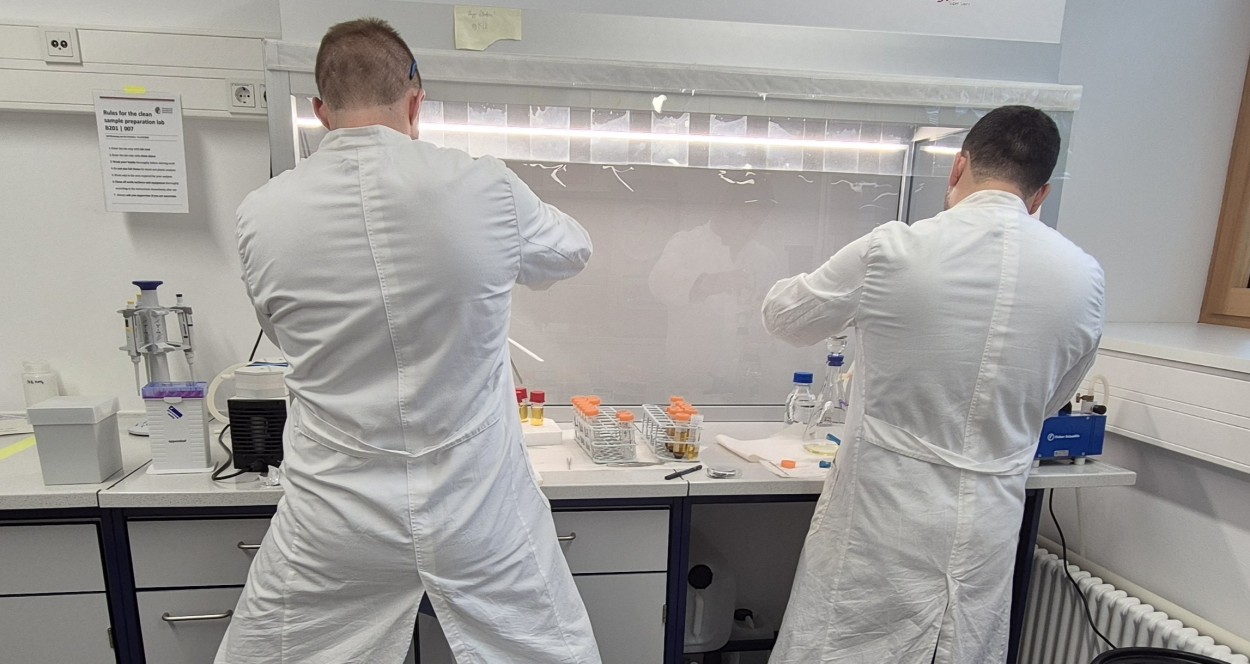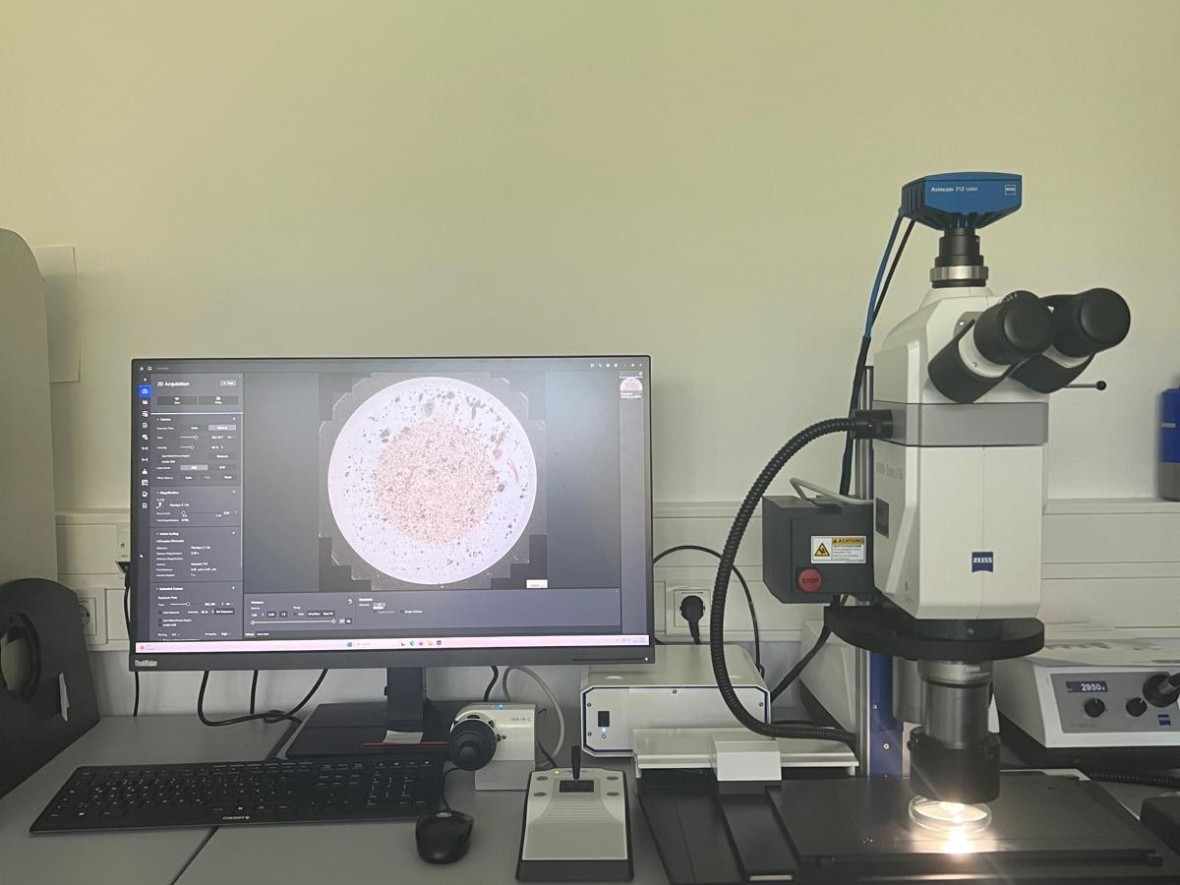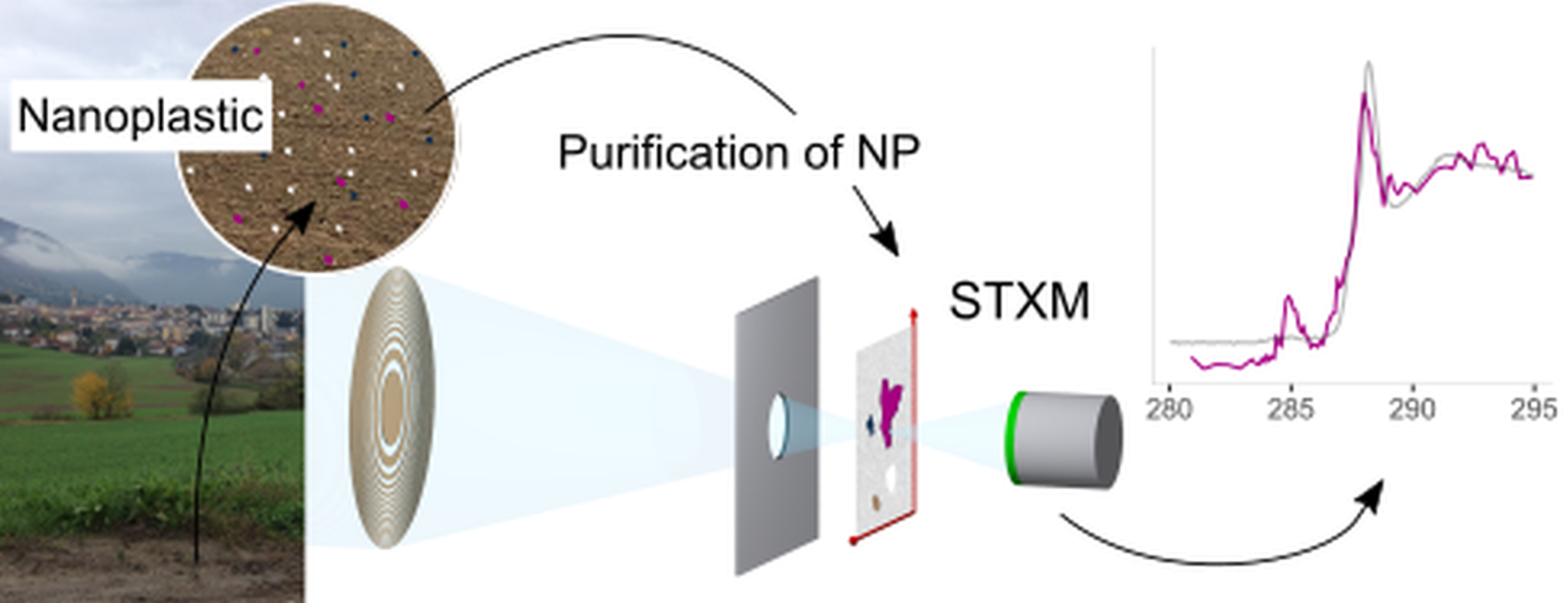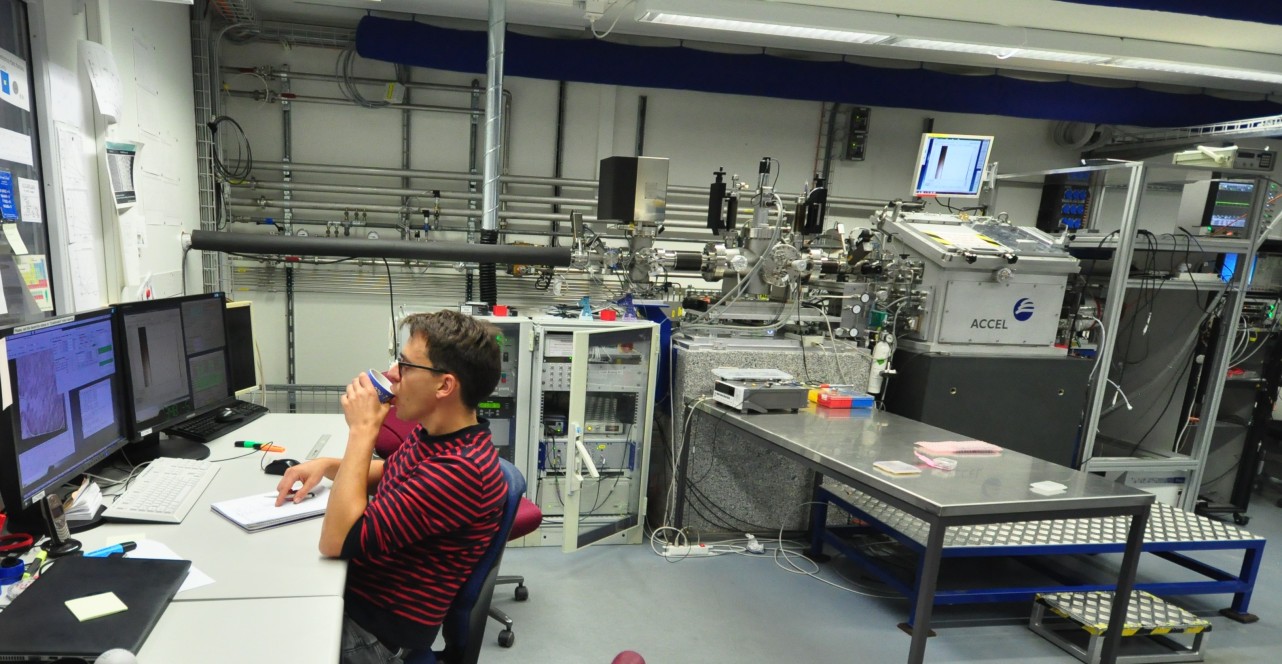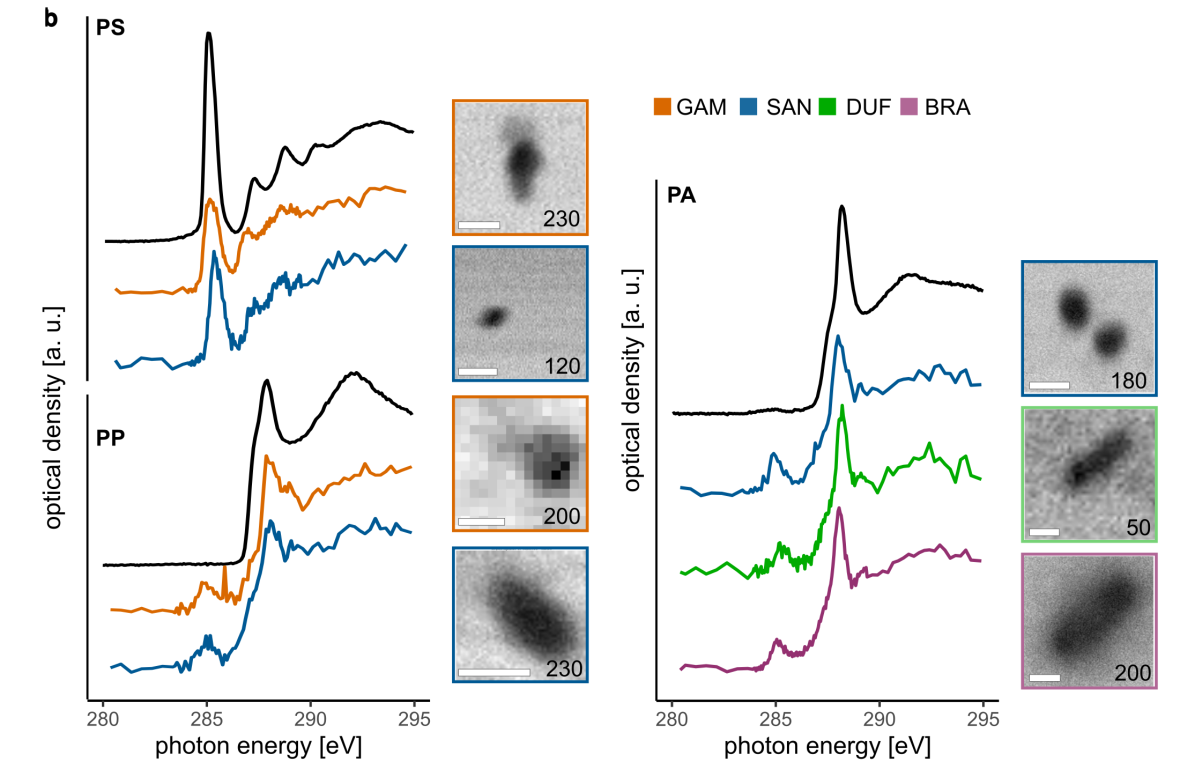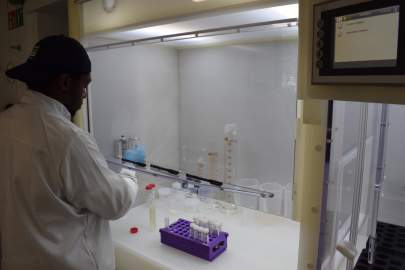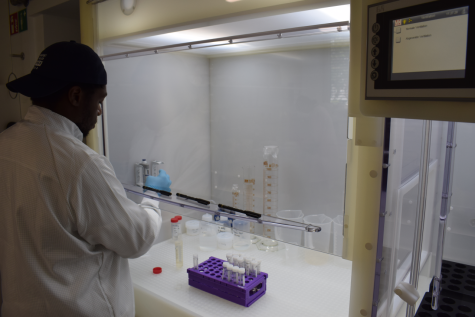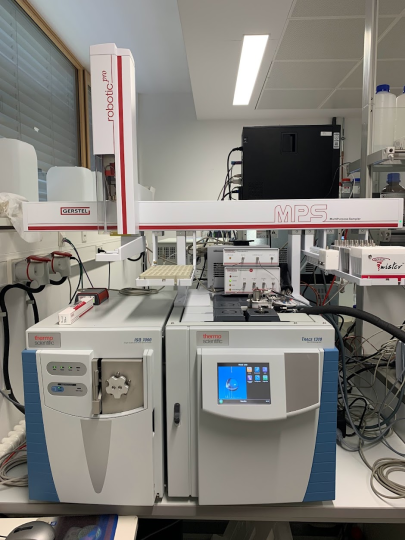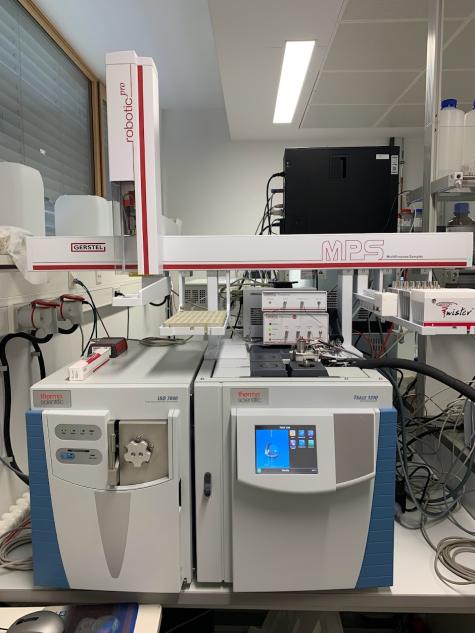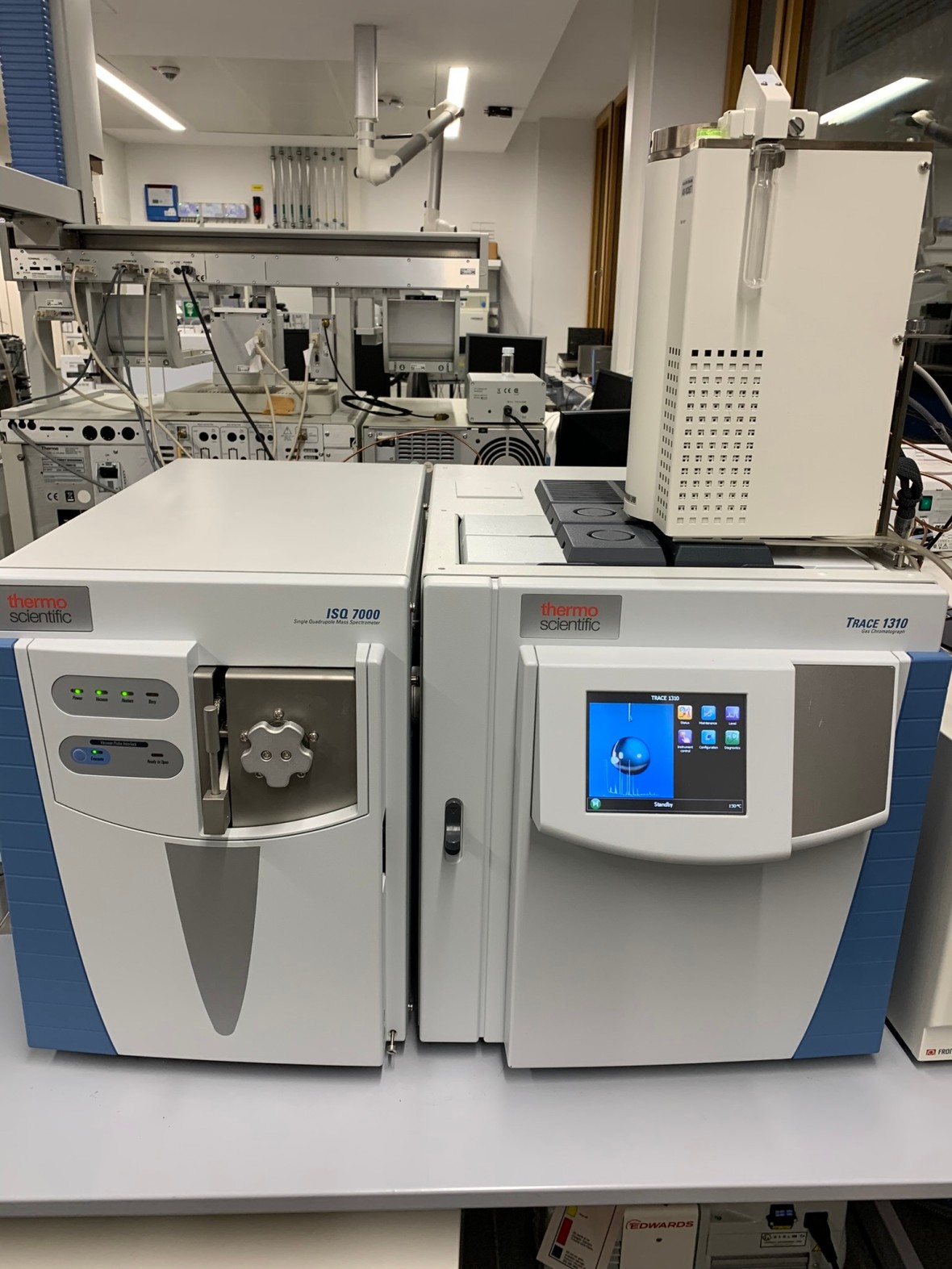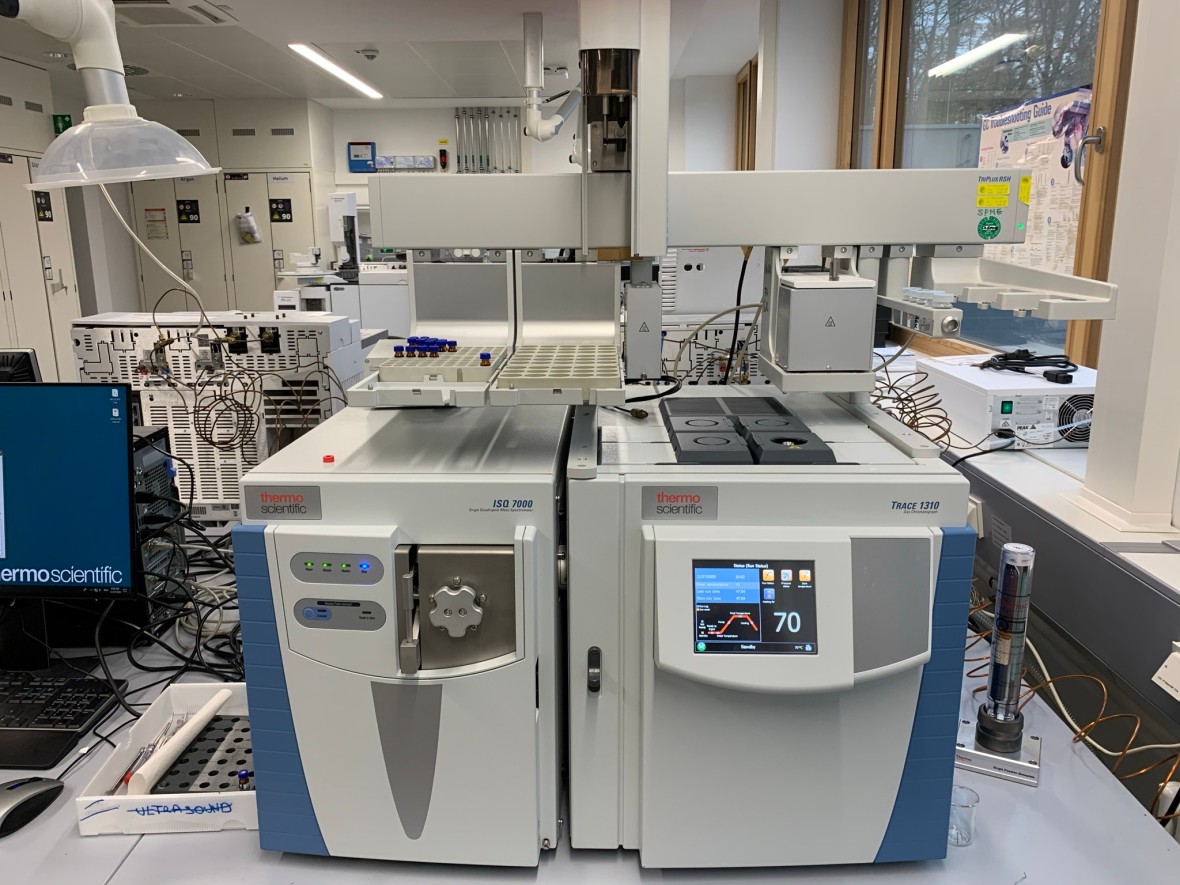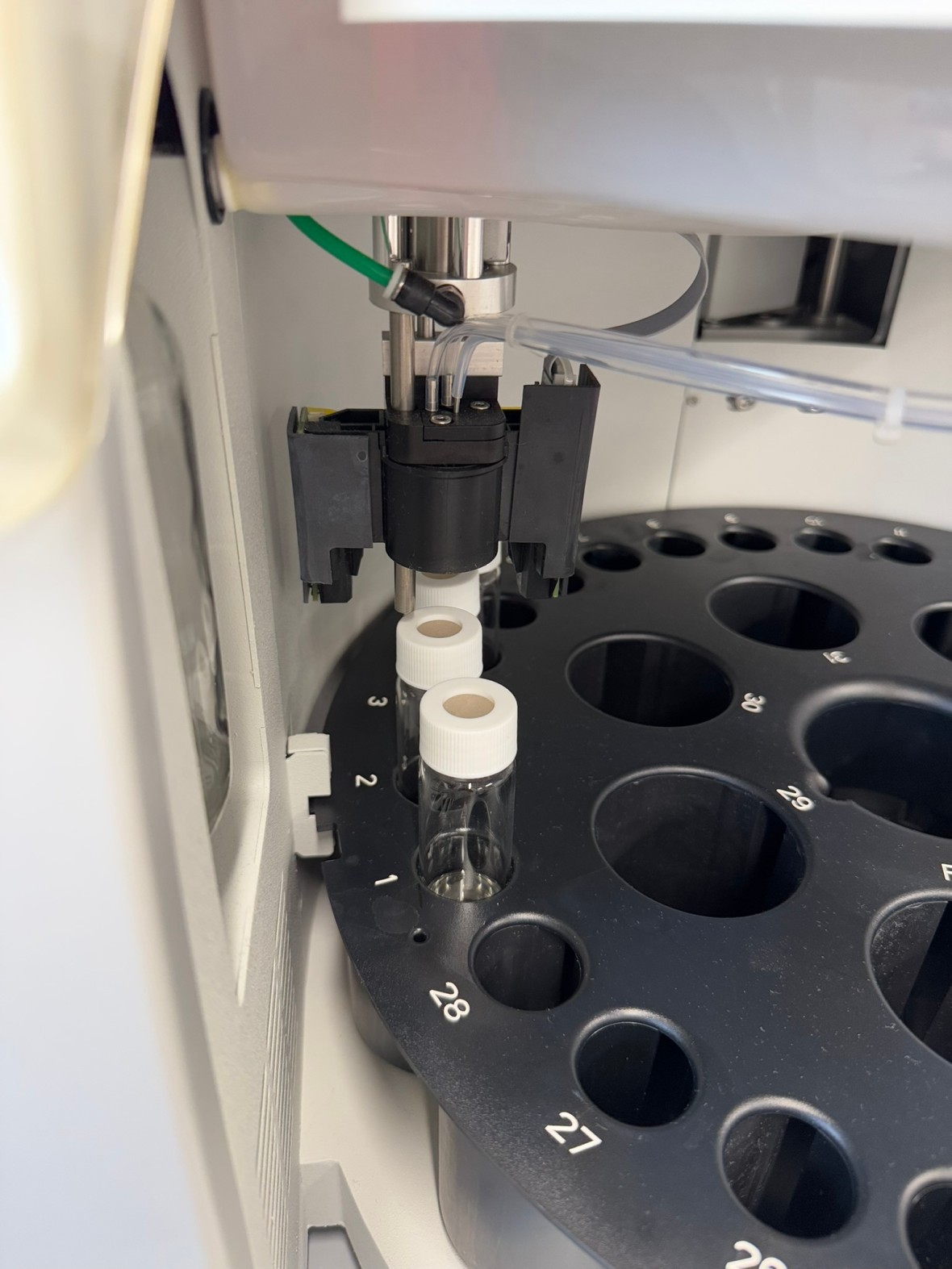Microplastic and tire wear particle analysis
Microplastics as polymeric particles in a size range of 5000–1 µm are emitted to the environment from multiple sources. Especially our soils have become part of global plastic cycles and can act as temporal sinks for microplastics. Once within the soil, microplastics can have negative effects on soil properties as well as soil ecology and plant-performance. We are working on the extraction of microplastics and tire wear particles from soil samples, including complex organic soil horizons and analyse microplastics via µFTIR chemical imaging.
Nanoplastic analysis
Nanoplastics are in the size range <1µm and might either be emitted directly (e.g., from cosmetics) or from bigger plastics by decomposition, UV induced breakdown or physically forced breakdown. As nanoplastics show negative effects on a variety of soil organisms, their occurrence might affect soil ecology and fertility. We are working on the extraction of nanoplastics from soil samples and methods to analyze nanoplastics in environmental samples.
Trace metal analysis
In our metal free workstation with hot plates, we digest soil and plant samples and purify trace metal (e.g. Cu, Zn) for stable isotope measurements. As an innovative tool, we use stable isotope enrichment to better understand the cycling of trace metals in the soil-plant system. We carry out sequential extractions while maintaining the prevailing redox conditions in the soil, i.e., in reduced submerged and oxygenated soils.
Lab and field experiments
To understand complex biogeochemical processes in soils and their interactions with pollutants like microplastics or trace metals, we use laboratory and field experiments. Under controlled laboratory or environmental conditions, the effects of pollutants on nutrient availability in soils or the uptake of pollutants in plants, can be traced, for example. Currently, we are conducting long-term laboratory experiments on the fragmentation and degradation of microplastics in soils and field experiments on the influence of different biodegradable mulch films on nutrient availability in soils or the uptake of copper in crops through the application of copper-containing fungicides.
In the environment, microplastics and tire wear particles may release a number of chemical additives (e.g., plasticizers, flame-retardants). Those hazardous organic compounds, thus, cause adverse impacts on terrestrial and aquatic ecosystem. Using our Py-GC/MS, we can investigate not only the type and amount of the microplastics but also hazardous organic compounds associating to the microplastics. Furthermore, we use compound-specific stable isotope analysis (CSIA) for the investigation if the origin or the degradation mechanism of the compound. The stable isotope composition of a compound is used as a specific fingerprint. For instance, hydrogen isotope composition of agricultural products like olive oil or wine can be used to estimate the geographical origin of the products. Our GC-C-IRMS is capable of implementing stable hydrogen (δ2H), carbon (δ13C) and oxygen (δ18O) isotope analyses. We can also analyze chlorine (δ37Cl) and bromine (δ81Br) isotopic compositions of halogenated pollutants in the environment to investigate their fate and transport.


